Your brand can’t afford to be ordinary. It needs to be unforgettable.
If you want to launch or reposition your brand with consistency, clarity, and differentiation, we’ve built the method for you.
This is for businesses that are tired of looking generic.
For those who don’t yet have a brand:
You have product clarity but no identity.
You don’t feel unique in your market.
You look professional but not memorable.
For those who need repositioning:
You’ve grown, but your brand stayed in the past.
Your pitch no longer matches what your business delivers.
Your product is solid but not recognized the way it should be.
What we do
Featured Services
Positioning
We design your brand strategy: essence, purpose, and differentiators, to give your brand direction and real market value.
Naming
We craft memorable names and unique expressions that capture your brand’s soul in every detail.
Brandstory & Narratives
Stories sell before the pitch. A clear and powerful brand statement opens doors, closes deals, and drives differentiation.
Visual Identity
Design systems that showcase your strengths, expand your visual vocabulary, and ensure consistency across every channel.
Our Methodology
Branding isn’t just about creating.
It’s about discovering, structuring, and turning value into perception.
Immersion
Without insight, there’s no strategy.
We start by listening, not creating. Our proprietary tool — Brand DNA Scan® — dives deep into your history, culture, goals, competitors, and ambition. It reveals gaps, pain points, and opportunities.
Research
Branding without data is just opinion.
We study markets, behaviors, trends, and benchmarks — nationally and globally — to identify relevant positioning and new growth territories.
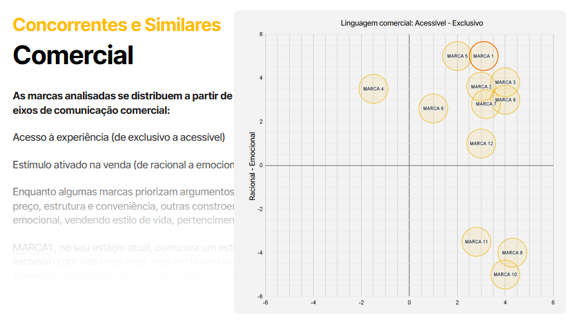
Strategy
Where your brand gains direction.
We define brand territory, essence, purpose, archetypes, differentiators, and value proposition. This step drives everything — from design to messaging, from copy to growth.
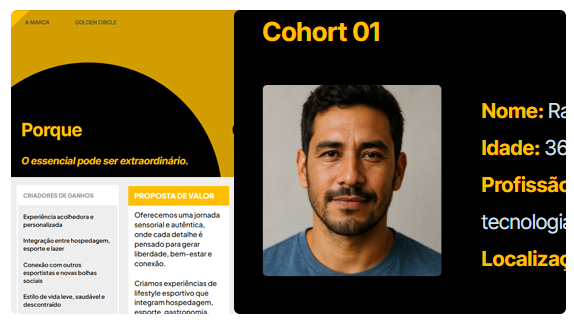
Identity
Your brand needs to be seen and remembered.
We translate strategy into expression, building full visual systems with versatility, consistency, and scalability.

Voice & Expression Guidelines
Brands that know what to say and how to say it.
We define tone of voice, key messaging, and editorial guidelines so your brand communicates with intention and coherence everywhere.
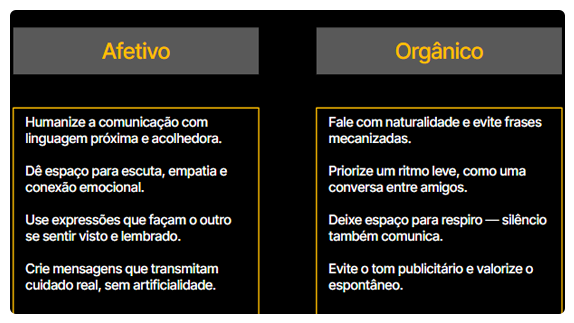
Applications
Being beautiful on paper isn’t enough.
It has to work in practice.
We deliver mockups, brand books, and pilot assets that show your brand alive in websites, social, campaigns, and pitches.
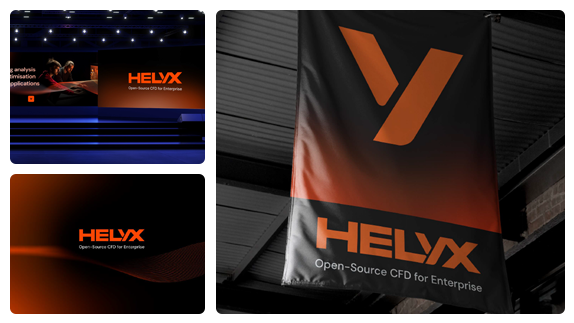
Brand DNA Scan®
Would you trust your brand’s future to guesswork?
We wouldn’t.
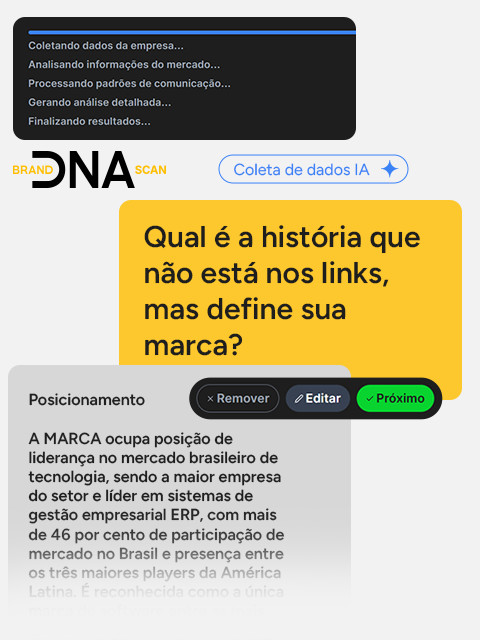
That’s why we created Brand DNA Scan®, Headcore’s exclusive AI-powered tool that collects data and organizes your brand’s strategic foundations in minutes.
With proprietary technology, semantic analysis, and proven frameworks, we turn loose perceptions into actionable insights.
It’s not a generic questionnaire. It’s applied intelligence that reveals what sets your brand apart, and where it needs to evolve.
Branding without guesswork.
Growth with data.
That’s how strategic evolution begins.
It’s Growth Evolution.
Trusted by leading global players
Strategic partnerships with the biggest names in technology, media, and digital innovation.
Cases

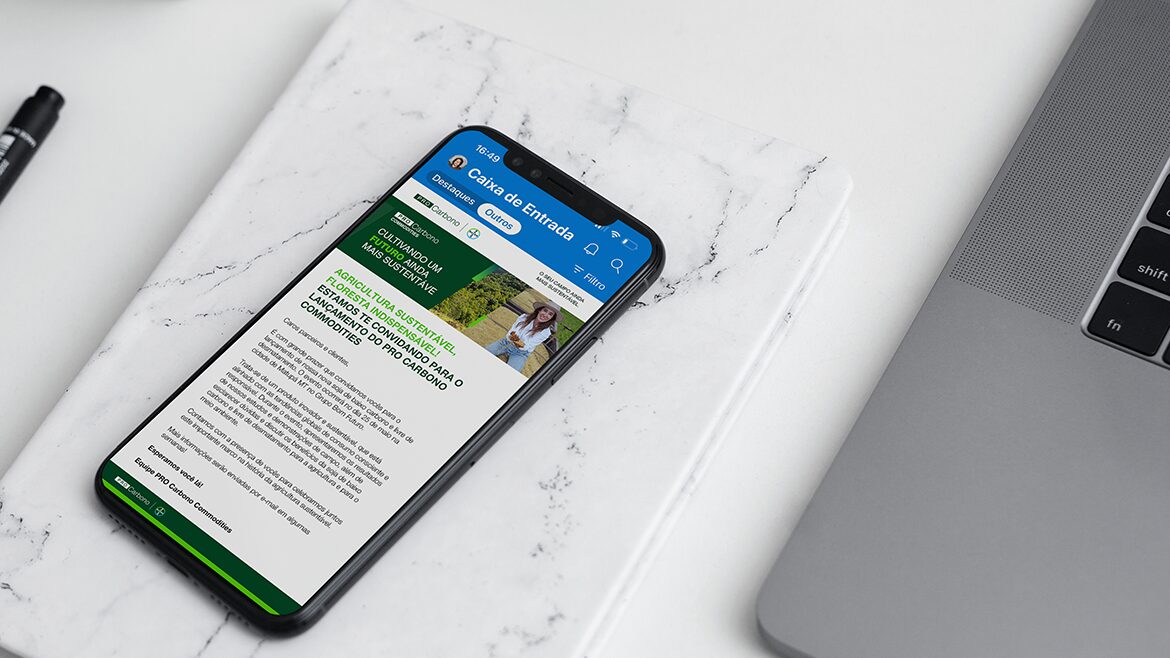




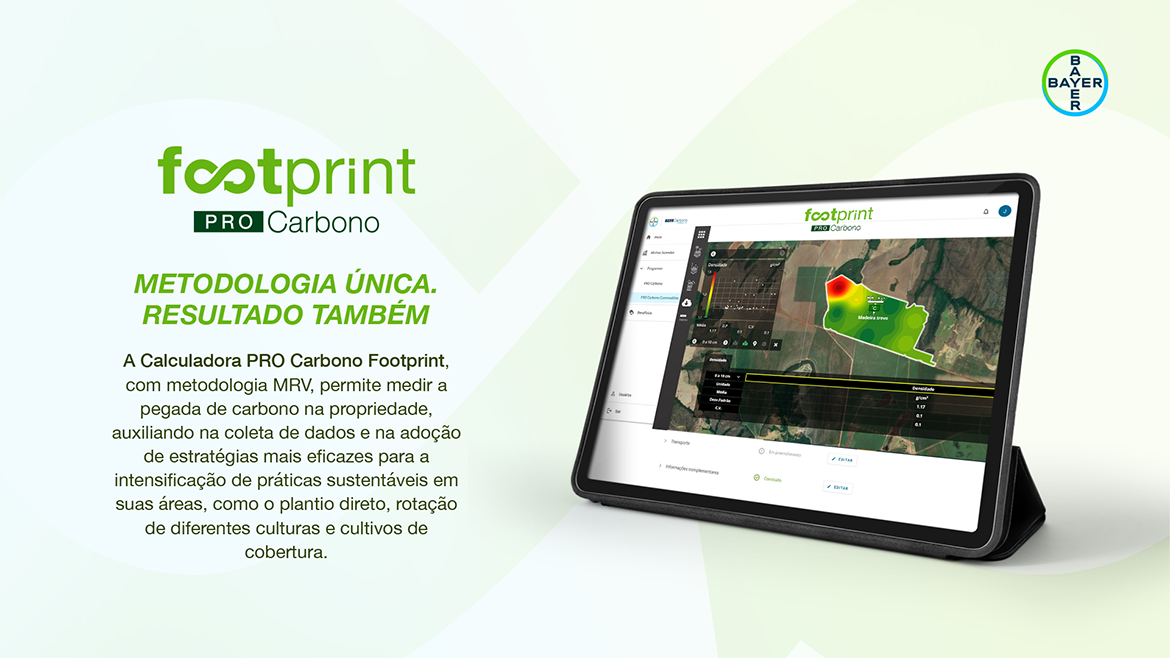
Client_ Bayer
Industry_ Agtech
Strategic branding is as critical as technology when the goal is cultural transformation. In agribusiness, well-structured brand architecture is the invisible backbone that builds trust among producers, partners, and stakeholders.
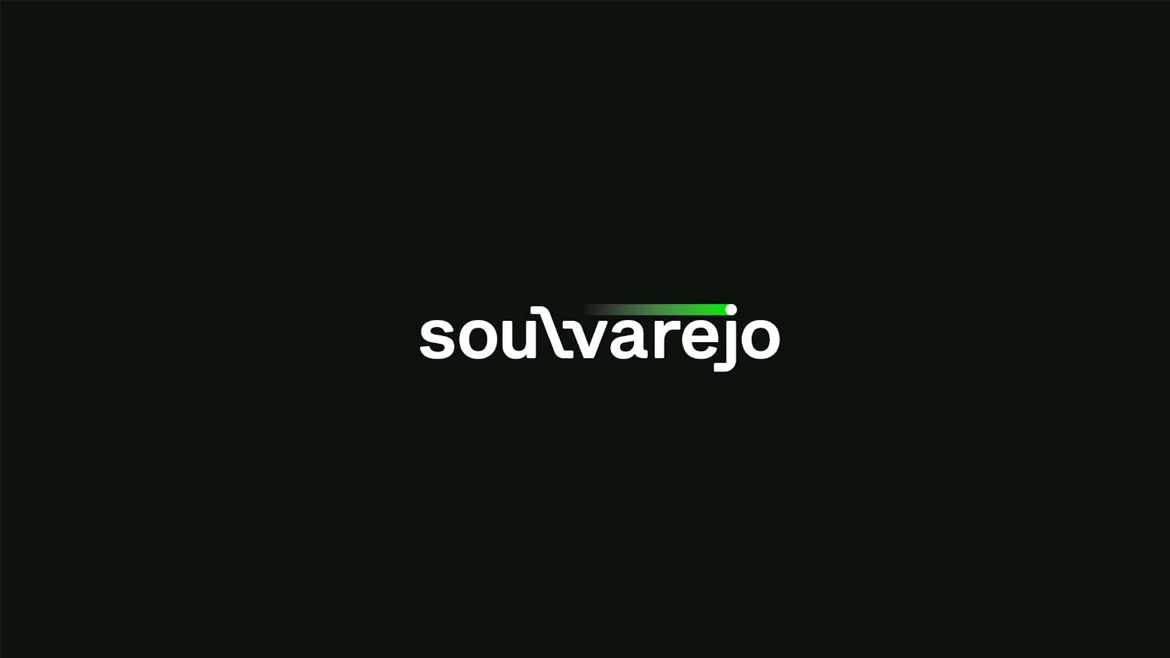
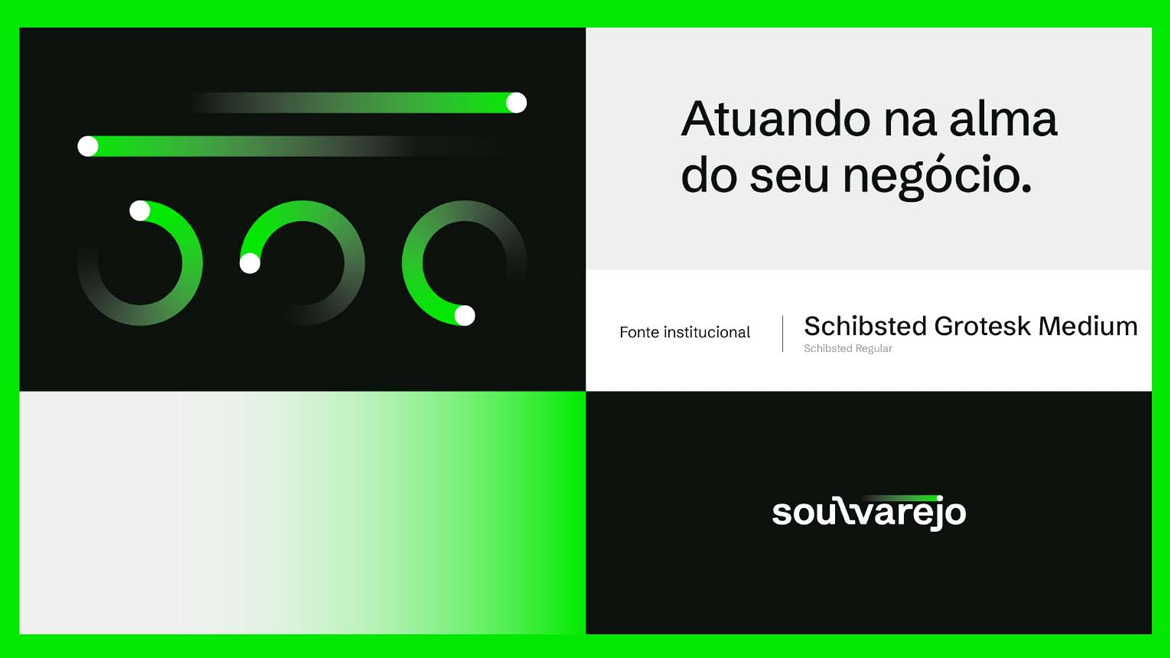
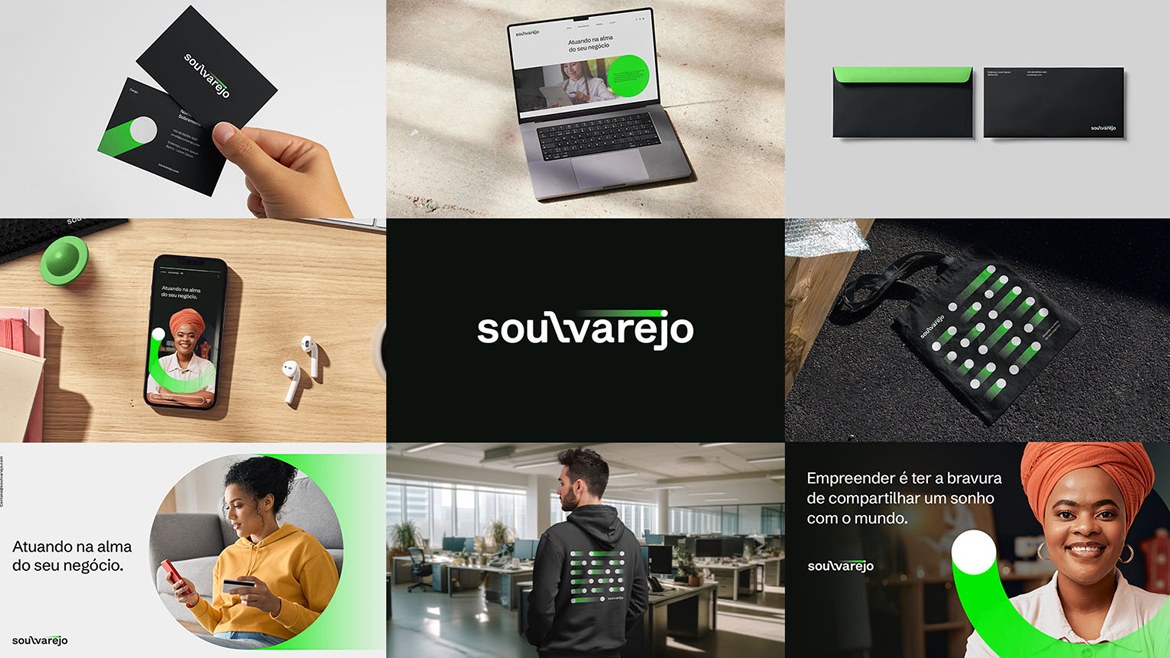
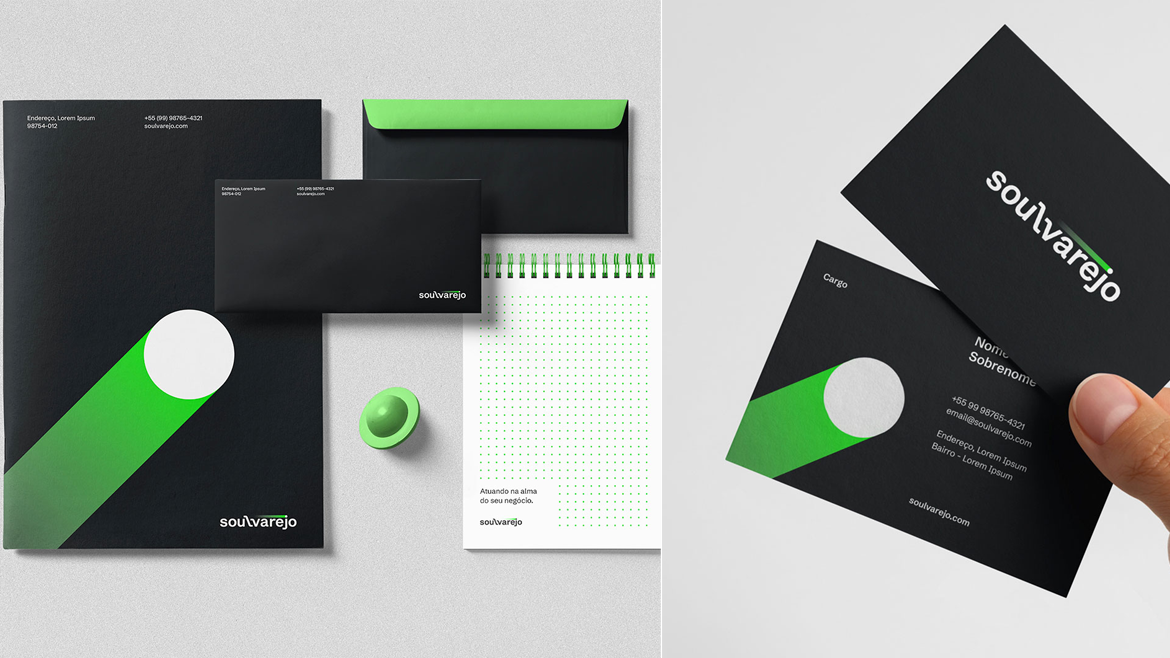

Client_ Soul Varejo
Industry_ Technology
Tech brands don’t have to feel cold. In complex industries, differentiation comes from making the complex simple — with clarity, beauty, and purpose. Soul Varejo proves that technology can have soul, and that human brands perform better.
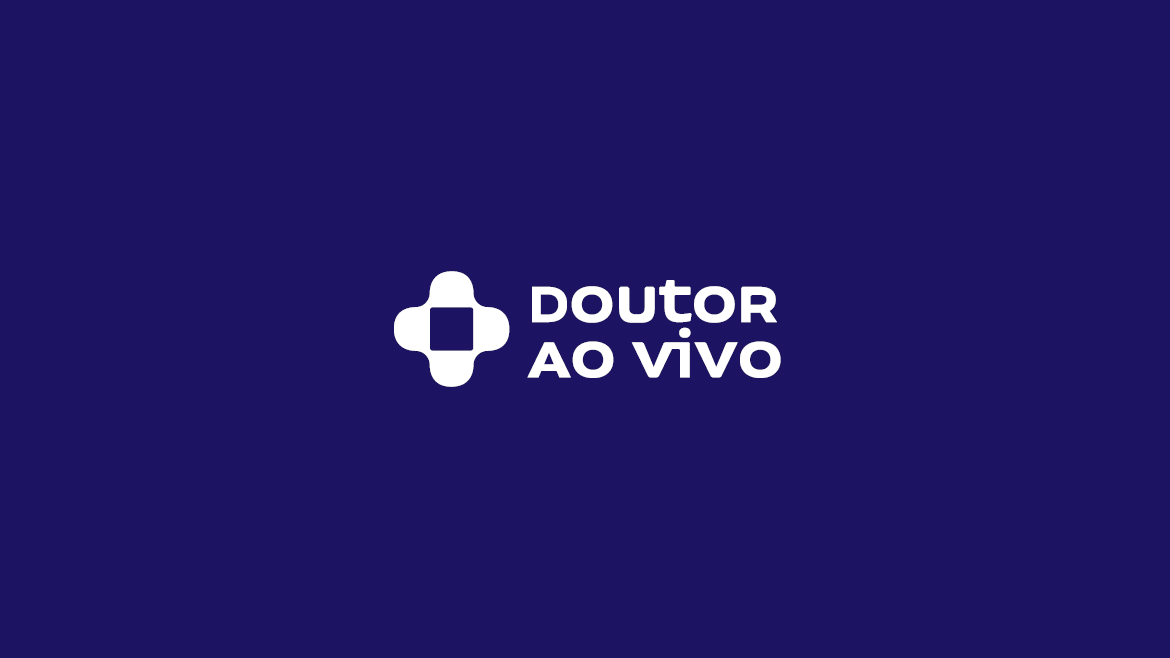
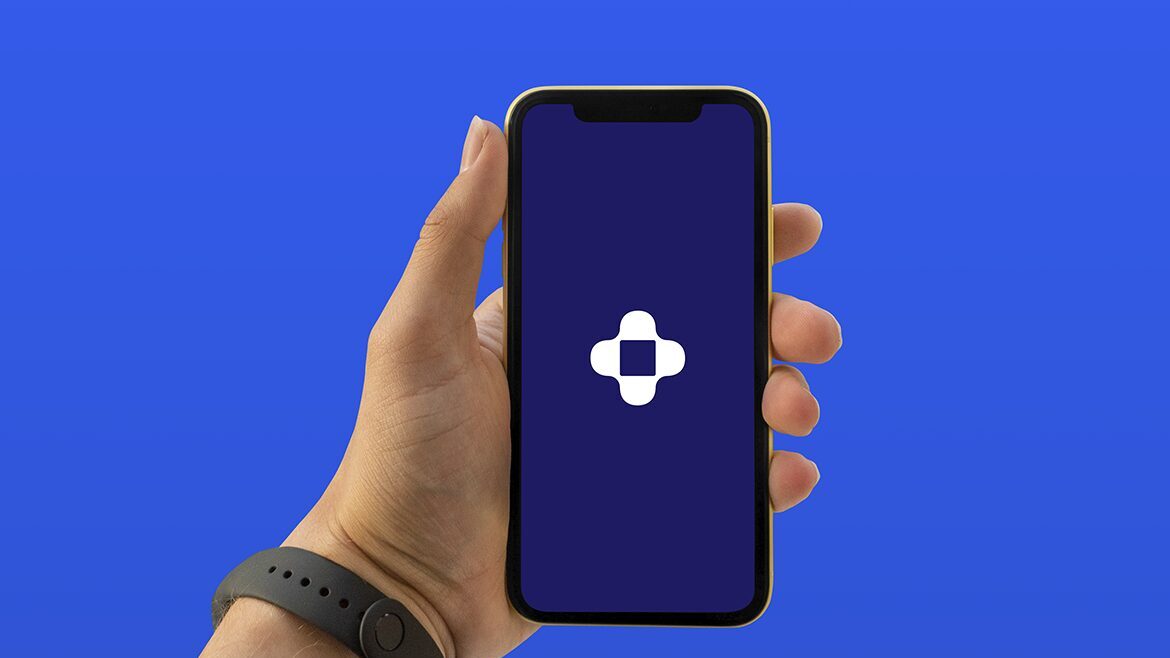
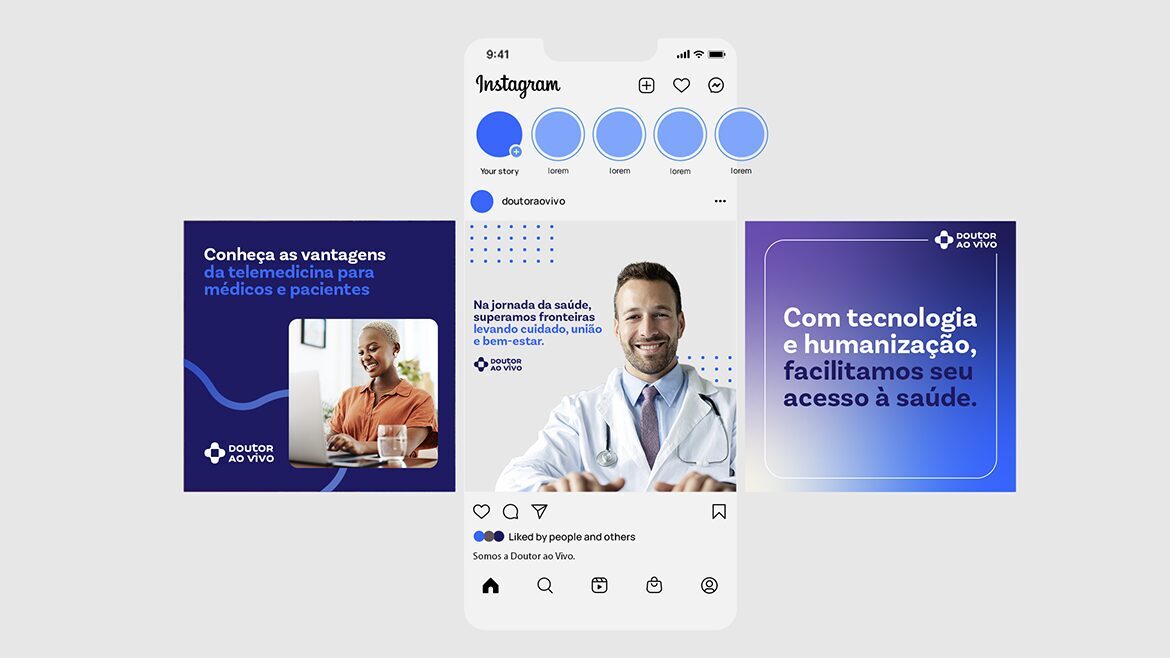
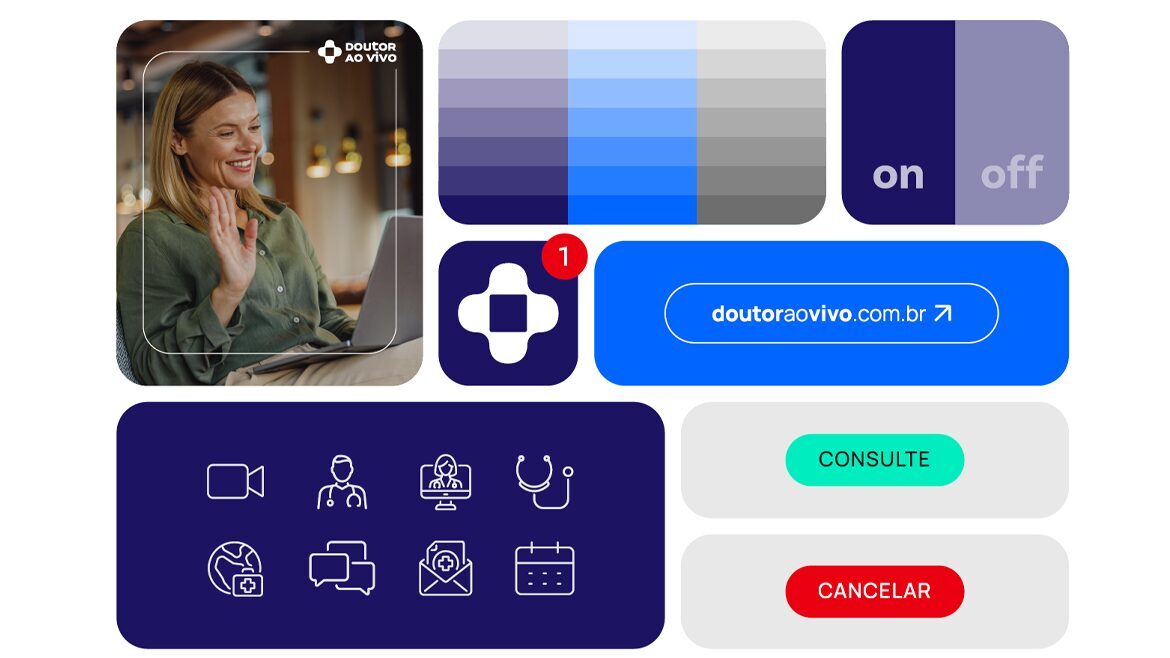
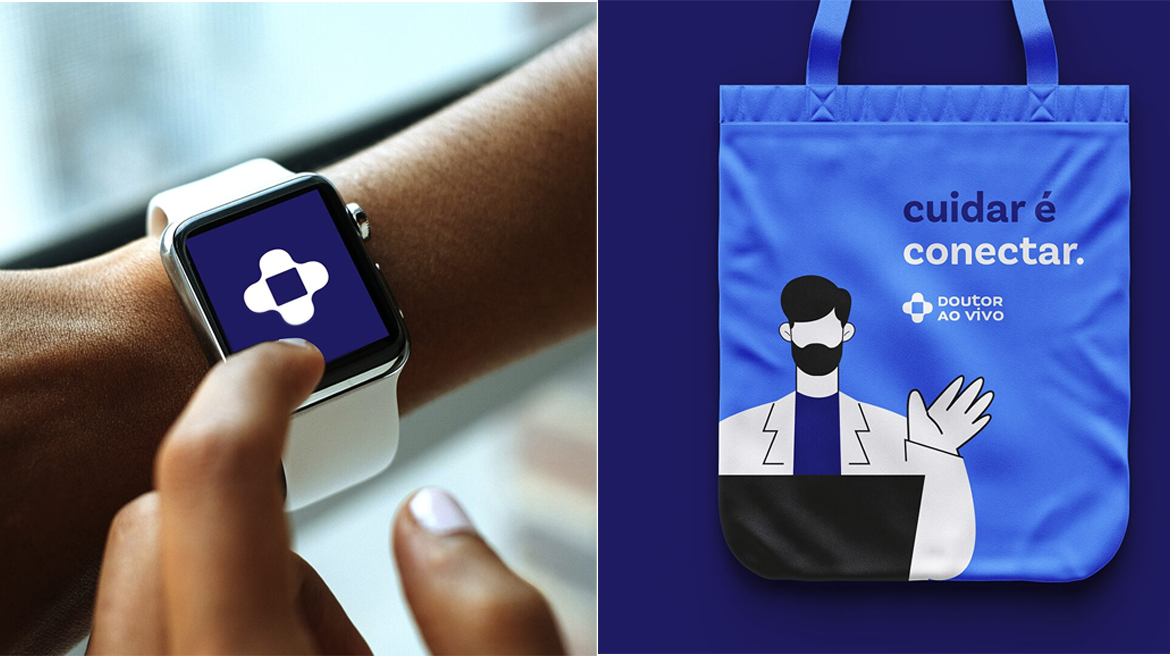
Client_ Dr Ao Vivo
Industry_ Healthtech
Digital health is more than technology: it’s trust, clarity, and connection.
By embedding these values in every brand element, we built more than a visual identity — we built an ecosystem that inspires security and accessibility on every screen.
Connect with our experts
FAQ
New here? Start here.
Strategy is the master plan that connects what the brand wants to achieve with the practical actions that will generate results. Instead of being abstract, it works as a decision-making map.
- Diagnosis: understanding the current landscape — market, competitors, and consumer behavior. This avoids working blindly.
- Focus definition: choosing where the brand will compete (e.g., e-commerce, retail, social media).
- Positioning: deciding how the brand wants to be perceived (e.g., premium, accessible, innovative).
- Action plans: translating positioning into campaigns, tone of voice, visual identity, and media channels.
- Measurement: tracking key metrics (CAC, LTV, ROAS) and adjusting quickly.
In the U.S., brands like Warby Parker and Glossier used strategy to transform small niches into billion-dollar businesses, combining clarity of positioning with efficient digital execution.
Naming is the process of creating brand, product, or service names. It’s not just creativity: it requires methodology and analysis.
- Essence: the name must express values and purpose (e.g., Evernote — memorize everything).
- Usability: it must be easy to pronounce in English and other relevant languages.
- Availability: legal and domain checks to avoid conflicts.
- Testing: research with audiences to measure impact and cultural interpretations.
In the U.S., this process is essential because the market is saturated. A strong name becomes an immediate competitive advantage.
Visual identity is the set of graphic elements that express the brand’s personality. It goes beyond the logo.
- Logo and icons: symbols that represent the brand memorably.
- Typography and colors: create emotional associations (blue = trust, red = energy).
- Digital applications: guidelines for websites, apps, e-commerce, and social platforms.
- Consistency: brand manuals that ensure everything is applied uniformly.
Practical example: Airbnb maintains a public brand book that guides campaigns, product UI, and even property signage, ensuring global consistency.
Verbal identity defines how the brand speaks and expresses itself. It’s the translation of the brand’s “personality” into words.
- Tone of voice: formal, friendly, bold, inspiring — depending on positioning.
- Language: word choices and expressions that create audience connection.
- Practical application: ads, posts, emails, customer service, video scripts.
Slack, for example, built its global brand with a simple, accessible, human language that became part of its cultural identity.
Facilitation is the practice of leading workshops and collaborative sessions to accelerate solutions. Instead of isolated decisions, co-creation teams find faster, more creative paths.
- Process: a facilitator guides groups using visual tools and agile methodologies.
- Benefit: breaks down silos across departments and generates testable solutions in days, not months.
- Example: Google Ventures uses 5-day design sprints to validate product ideas.
Purpose is the reason why the brand exists beyond profit. It gives meaning and creates emotional connections between people and the business.
- Clarity: it should be simple and inspiring (e.g., Tesla — accelerate the transition to sustainable energy).
- Impact: connects the brand to a cause bigger than the product itself.
- Application: guides campaigns, culture, and customer experience.
In the U.S., purpose-driven brands like Patagonia attract both customers and talent who share their values.
Brand architecture organizes how products, services, and sub-brands relate. It avoids confusion and optimizes marketing investments.
- Branded House: one main brand supporting all (e.g., Google → Google Maps, Google Drive).
- House of Brands: each with its own identity (e.g., P&G → Gillette, Pampers, Tide).
- Hybrid Model: a mix of both (e.g., Amazon → Prime, Kindle, AWS).
This choice directly influences how customers perceive value and trust.
Paid media means investing in ads to accelerate visibility and conversions. Unlike organic media, it ensures predictable reach.
- Main channels: Google Ads, Meta Ads, LinkedIn Ads, TikTok Ads, Amazon Ads.
- New frontiers: Connected TV (Hulu, Roku) and Retail Media (Walmart, Target).
- Benefit: measurable in real time, ideal for scaling fast.
U.S. DTC startups scale sales by investing heavily in Meta Ads and TikTok Ads in early stages.
Social Ads are ads designed specifically for social networks, adapted to user behavior.
- Formats: Stories, Reels, TikTok In-Feed, LinkedIn Carousels.
- Strength: allow targeting by interest, behavior, and context.
- Example: fashion brands in the U.S. use TikTok to make products go viral in days.
Segmentation means dividing audiences into smaller groups to deliver personalized messages. This increases relevance and reduces media waste.
- Basic: age, gender, location.
- Behavioral: purchase history and browsing patterns.
- Advanced: predictive models that anticipate buying intent.
In the U.S., the use of first-party data is growing due to cookie restrictions.
Being data-driven means making decisions based on real data, not assumptions. This increases precision and reduces risks.
- Collection: using tools like GA4, Mixpanel, CRM.
- Analysis: combining data from different channels to see the big picture.
- Action: adjusting campaigns in real time based on insights.
Netflix is a benchmark: it uses data even to decide which series to produce.
Conversion happens when a user performs the action the brand expects. It could be a purchase, but also a signup or a strategic click.
- Micro-conversions: download an e-book, add to cart.
- Macro-conversions: completed purchase, service subscription.
- Optimization: A/B testing and UX analysis to increase rates.
Example: Shopify shows how small checkout improvements can increase conversion by up to 20%.
Strategic content is designed to educate, engage, and convert. It’s not made just to please algorithms, but to guide the customer journey.
- Top of funnel: blogs and posts that capture attention.
- Mid-funnel: webinars and case studies that educate.
- Bottom of funnel: comparisons and social proof that convert.
HubSpot is a reference in using content to nurture leads until the final decision.
Cloud computing is the use of remote servers to store and process data. It replaces the need for physical servers inside companies.
- Advantages: scalability, security, on-demand cost.
- Use cases: U.S. SaaS startups host everything on AWS or Google Cloud to reduce costs.
Cybersecurity protects data and systems against attacks. This includes password protection all the way to enterprise firewalls.
- Tools: multi-factor authentication, encryption, 24/7 monitoring.
- Compliance: following laws like CCPA (U.S.) and GDPR (Europe).
U.S. digital banks like Chime apply SOC2 protocols to build trust.
Machine Learning teaches machines to identify patterns in data and make decisions without explicit programming.
- In marketing: predict which leads are most likely to convert.
- In e-commerce: recommend personalized products.
Amazon and Netflix use ML to boost retention and sales.
APIs are bridges that let different systems talk to each other. They are essential for modern integrations.
- In marketing: integrate CRM with ad platforms.
- In e-commerce: connect stores with payment and logistics providers.
Shopify and Stripe grew by leveraging open, scalable APIs.
Automation replaces repetitive tasks with automatic flows. This frees up teams to focus on real value creation.
- Tools: Zapier, n8n, UiPath.
- Example: automating website lead capture into CRM with automatic calendar scheduling.
Agile and DevOps are methodologies that accelerate innovation, but they operate in different areas.
- Agile: project management in short cycles (sprints) focused on the customer.
- DevOps: integration between development and operations to launch fast, secure updates.
SaaS companies like Atlassian combine Agile for team management and DevOps for continuous delivery.
